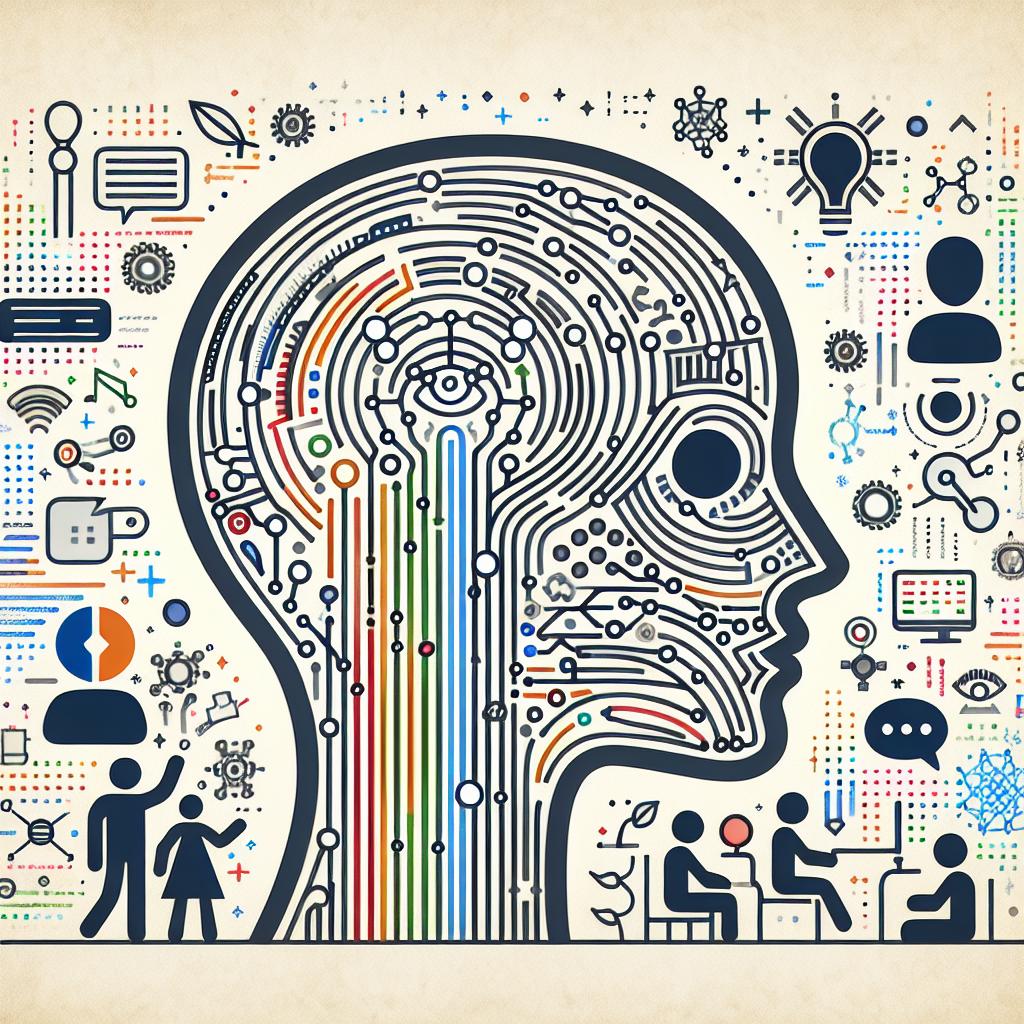In a world where digital interactions are becoming increasingly ubiquitous, have you ever stopped to consider what truly makes a conversation with a chatbot engaging and trustworthy? Imagine having a friendly virtual companion that understands your needs, offers support, and even shares a chuckle or two—all without the slightest hint of anxiety or judgment. Welcome to the fascinating realm of chatbot design, where psychology meets technology in the quest to create more human-like interactions.
In this article, we’ll embark on a journey into the psychology of chatbot design, exploring the intricate nuances that govern our perceptions of trust and engagement in these digital dialogues. From the art of crafting relatable personalities to the science behind empathetic responses, we’ll unravel the secrets that make chatbots not just functional tools, but delightful conversational partners. So, whether you’re a designer aiming to enhance your bots or a curious user wanting to understand the magic behind these digital confidants, grab a cup of coffee and join us as we delve into the world of trustworthy and engaging conversations. Your chatbot experience is about to get a whole lot more interesting!
Understanding Human Emotions: The Heart of Chatbot Interactions
Human emotions are complex and nuanced, intertwining with our day-to-day interactions in profound ways. For chatbots to become truly engaging partners in conversation, they must not only understand the words being spoken but also the emotional subtext behind those words. This requires an approach that goes beyond mere programmed responses, incorporating elements such as empathetic language, context awareness, and an ability to gauge user sentiment. By adopting these strategies, chatbots can create a more relatable persona that resonates with users, fostering a sense of trust and connection.
One effective method for enhancing chatbot interactions is through the integration of emotional cues into the design. Consider implementing features like:
- Emotion Recognition: Utilizing natural language processing to identify user emotions based on text input.
- Personalization: Tailoring responses based on user history and preferences to build familiarity.
- Adaptive Language: Adjusting tone and style according to the user’s emotional state or communication style.
This empathetic framework encourages users to engage more freely, knowing that they are communicating with a bot that recognizes their emotional landscape. An analysis of successful chatbot implementations can further reveal how emotional intelligence leads to greater user satisfaction and retention, ultimately enhancing the overall conversational experience.

Crafting Personalities: Designing Chatbots That Connect and Engage
Creating chatbots that truly resonate with users is an art that intertwines technology with psychology. By understanding users’ emotions and behavioral cues, designers can craft personalities that feel authentic and approachable. A chatbot’s voice should be consistent and relatable, incorporating aspects such as humor, empathy, and warmth. This fosters an environment where users feel comfortable engaging, resulting in a dialogue that’s not just transactional but builds genuine connection.
To achieve this, developers should consider key factors when designing a chatbot’s personality:
- Human-Like Interaction: Use conversational language that mimics natural speech patterns.
- Emotional Intelligence: Integrate responses that acknowledge user sentiments.
- Adaptability: Ensure the chatbot can adjust its tone based on user preferences.
- Feedback Loops: Allow users to provide feedback on their experiences to refine interactions.
| Personality Trait | Impacts User Experience |
|---|---|
| Empathy | Increases user satisfaction and trust. |
| Humor | Enhances engagement and makes conversations memorable. |
| Politeness | Fosters a respectful interaction environment. |
| Curiosity | Encourages users to share more, leading to richer conversations. |

Building Trust Through Transparency: Secrets to Honest Conversations
Creating a sense of trust in conversations with chatbots begins with clarity and honesty in their design. When users feel that they understand how the chatbot operates and what to expect from interactions, they are more likely to engage openly. This can be achieved through simple tactics like:
- Clear Purpose: Define what the chatbot is designed to do.
- Transparent Limits: Inform users of the capabilities and limitations.
- Consistent Language: Use friendly and relatable language that aligns with the brand’s voice.
Moreover, utilizing feedback loops can enhance the conversational experience. The ability to adapt and respond to user needs fosters collaboration and trust. Designing features such as regular updates based on user interactions and introducing a feedback system can entice users to share their experiences. Consider this simple table illustrating best practices for effective chatbot communication:
| Practice | Benefit |
|---|---|
| Active Listening | Demonstrates empathy and understanding. |
| Consistent Updates | Builds confidence in the system’s reliability. |
| User-Centric Adjustments | Encourages user engagement and satisfaction. |

Feedback Loops for Improvement: Encouraging User Input for Growth
To cultivate a user-centered design, it is vital to integrate regular feedback loops that obtain insights from your users. This can be achieved through various channels, such as:
- User Surveys: Quick polls or in-depth surveys that delve into user experiences.
- Chat Transcripts: Analyzing conversations can reveal user needs and concerns.
- Testing Groups: Engaging a small group of users to test new features before full deployment.
By actively seeking user input, you not only demonstrate that their opinions matter but also foster a sense of community and trust. This two-way communication can lead to rapid iterations in chatbot design, effectively addressing pain points and enhancing user satisfaction. Here’s a simple framework to implement a rich feedback system:
| Feedback Method | Frequency | Purpose |
|---|---|---|
| User Surveys | Quarterly | Measure satisfaction and identify improvements |
| Chatbot Analytics | Monthly | Analyze interaction patterns and issues |
| Focus Groups | Bi-annually | Gather in-depth feedback on specific features |
Future Outlook
As we wrap up our exploration of the fascinating world of chatbot design, it’s clear that the intersection of psychology and technology holds immense potential for creating meaningful, engaging conversations. By understanding the nuances of human interaction and embracing the nuances of trust, designers can craft chatbots that don’t just answer questions — they connect with users on a deeper level. Imagine a chatbot that feels like a thoughtful companion rather than a faceless program, effortlessly guiding users through their queries while respecting their unique preferences.
As our digital landscape continues to evolve, the importance of fostering trust and building rapport will only grow. Let us strive to create chatbots that bring warmth to technology, inviting users into conversations that feel genuine and enriching. So the next time you chat with a virtual assistant, remember: they’re not just lines of code; they’re an extension of our desire for connection.
Here’s to a future where our digital dialogues are as engaging and trustworthy as the best of friendships. Happy chatting!

